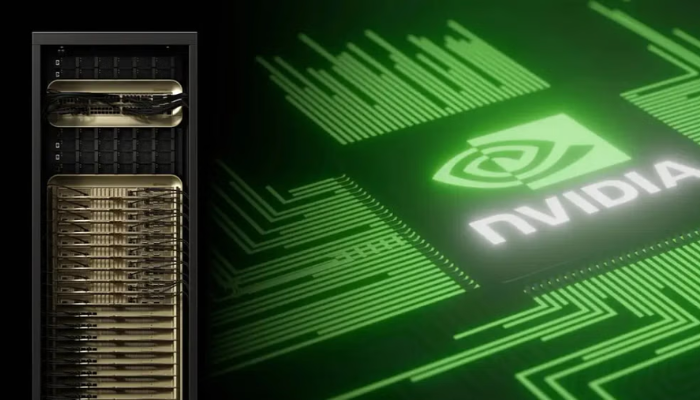
*Image from the internet; all rights belong to the original author, for reference only.
GTC25 In-Depth: NVIDIA Overhauls AI Architecture, Ushering in a New Round of Disruption Across the Electronic Components Supply Chain
From March 18–21, 2025, NVIDIA hosted its annual GPU Technology Conference (GTC25) in San Jose, California. As a global barometer for AI computing infrastructure, the event attracted developers, enterprises, and ecosystem partners from around the world.
At this year’s GTC, NVIDIA officially unveiled its next-generation Blackwell Ultra GPU architecture, introducing flagship chips like the GB300, along with supporting technologies such as NVLink 5.0, electro-optical networking, BlueField-3 DPU, and its new AI data platform architecture. This marks a strategic shift in NVIDIA’s approach—from focusing solely on chip performance to advancing system-level co-optimization.
The introduction of Blackwell Ultra not only dramatically enhances AI model training and inference efficiency but also directly impacts several key sectors in the electronic components space—including HBM memory, DPU chips, silicon photonics, advanced packaging, and AI server systems. Together, these shifts signal the beginning of a new upgrade cycle for the entire AI hardware supply chain.
Table of Contents
ToggleQ1: What Are the Core Breakthroughs of Blackwell Ultra? Where Is AI Infrastructure Headed?
At the heart of the Blackwell Ultra architecture is the GB300 NVL72 system, which showcases major innovations in process technology, memory, interconnects, and system-level coordination.
1. Flagship GB300 GPU and NVL72 System Integration
The GB300 GPU is built on TSMC’s advanced 4NP (4nm enhanced) process, featuring 12 stacks of HBM3e memory per chip (192GB total), delivering a system-level memory bandwidth of 11.5TB/s. In the NVL72 configuration, 72 GB300 GPUs are interconnected via NVLink 5.0 and work in tandem with 36 Grace CPUs, forming a high-performance AI training and inference platform.
2. Next-Gen Transformer Engine: Optimized for Large AI Models
The B200 GPU integrates a new Transformer Engine supporting FP8 mixed-precision, along with intelligent tensor caching and sparsity acceleration. Enhanced Tensor Cores improve both integer and neural rendering performance, boosting training efficiency by 2.5x over the previous generation.
3. HBM3e High-Bandwidth Memory: Solving the Memory Bottleneck
The widespread deployment of HBM3e not only enhances memory throughput but also drives advancements in wafer-level packaging, chip stacking, and high-speed interconnect materials—paving the way for future memory technologies like HBM4.
4. NVLink 5.0 with Silicon Photonics: 800Gbps Ultra-High-Speed Interconnect
Blackwell introduces NVLink 5.0 with silicon photonic switch chips, supporting 800Gbps per lane. These enable low-latency, energy-efficient interconnects across large GPU clusters. Integrated lasers, modulators, and receivers reduce signal loss and simplify board layout, forming the backbone of next-gen “AI factory” clusters.
5. BlueField-3 DPU and 800G InfiniBand: Intelligent Data Paths
Blackwell-based systems also feature NVIDIA’s BlueField-3 DPU, powered by 16-core Arm Cortex-A78 CPUs and supporting 400GbE and 800G InfiniBand. With network, storage, and security offloads, the DPU accelerates AI data processing and infrastructure orchestration. Meanwhile, 800G networking solutions leverage DSP-based processing and next-gen FEC coding, reducing power consumption by 15% while supporting high concurrency for multi-agent AI workloads.
Q2: Which Key Components Will Be Affected by This Architecture Shift? Notable Products to Watch
Component Segment | Key Product Models | Technical Features / Application Notes |
HBM Memory | SK hynix HBM3E 24GB/36GB, Samsung HBM4 (engineering samples) | Enables 192GB memory per GB300 GPU; future Rubin architecture to adopt HBM4 with more layers, faster I/O, and advanced packaging |
AI GPUs | NVIDIA GB200 / GB300 (Blackwell Ultra), Rubin (expected 2026) | GB300 powers NVL72 systems; Rubin to feature dual-die packaging, FP4 precision, and HBM4—optimized for large-scale model training and multi-agent inference |
Optical Modules & Silicon Photonics | Broadcom BCM85812 (800G DR8), InnoLight OSFP 800G AOC, Credo HiWire LP800 | Key enablers of Spectrum-X and Quantum-X interconnects; silicon photonics become essential for high-speed GPU networking in AI data centers |
DPU / Smart I/O Chips | NVIDIA BlueField-3, Marvell Octeon 10 DPU, Intel IPU E2000 | Provide intelligent offloading for network, storage, and security tasks; BlueField-3 features programmable accelerators and robust Arm-based architecture |
AI Server Systems | Supermicro SYS-821GE-TNHR, Inspur NF5680M7 / GX7 | Built for GB200/GB300 platforms; support NVLink 5.0, high-wattage power delivery, liquid cooling, and dense GPU interconnects |
Power Management ICs | TI TPS53681, Infineon TDA21475, Renesas ISL68137 | Multi-phase VRM, smart regulation, and PMBus support; optimized for high-current AI GPU and DPU power needs with advanced thermal response |
Q3: What’s Changing in AI Compute Architecture—and How Should Component Suppliers Respond?
The debut of Blackwell Ultra marks the arrival of full-stack optimization in AI computing. Several key trends are emerging:
- Accelerated Component Iteration & New Bottlenecks
The co-deployment of HBM3e, NVLink 5.0, and DPUs introduces new system-level challenges around thermal management, power delivery, and chip packaging. - Inference Is the New Battleground for Compute
Sparse AI models are pushing inference workloads to become more resource-intensive. Support for FP4 precision, DPU offloading, and ultra-low-latency networkingwill define the next generation of inference platforms. - Electro-Optical Convergence Is Gaining Momentum
With the rise of 800G optical modulesand integrated silicon photonics, data center interconnects are undergoing a structural shift—driving new standards in optical components, EMC, and high-speed PCB design.
Conclusion
GTC25 brought more than just another leap in hardware—it showcased a fundamental redesign of the AI system architecture. NVIDIA’s Blackwell Ultra signals a new technological roadmap that’s already reshaping the design logic, production cycles, and competitive dynamics of the electronic components supply chain.
From wafers and photonics to packaging substrates and interconnect chips, a new wave of high-value component demand is taking shape. Industry players would be wise to keep a close watch—and act early.
© 2025 Win Source Electronics. All rights reserved. This content is protected by copyright and may not be reproduced, distributed, transmitted, cached or otherwise used, except with the prior written permission of Win Source Electronics.

COMMENTS